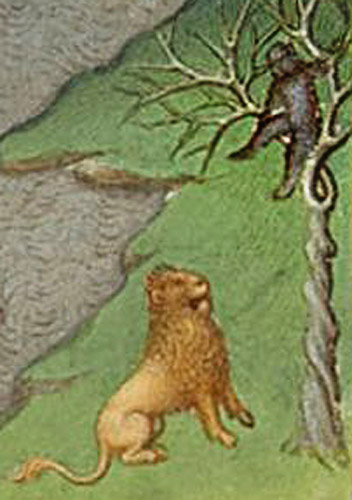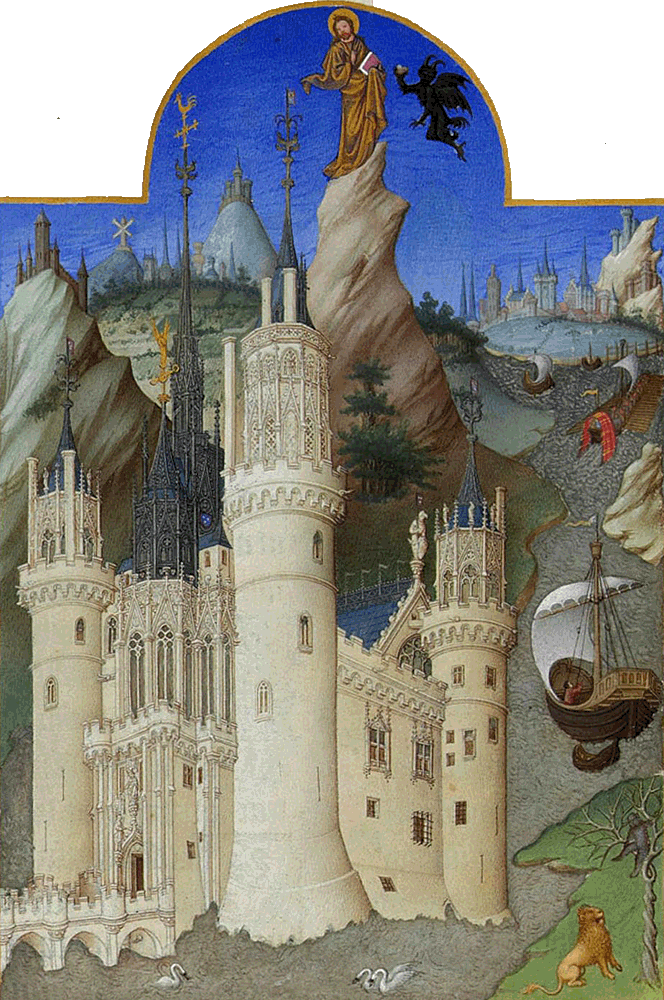As usual in medieval images of the temptation of Christ, the devil is represented as a grotesque. With his right hand he appears to offer Jesus a golden cup.
 The lion in the lower right symbolizes two aspects of Christ. First, the Physiologus says the lion eludes hunters by covering its tracks with its tail, just as "Our Lord Jesus Christ, the spiritual lion…hid his spiritual identity in Mary's womb." Christ's hidden divinity at this point in his earthly life is an important issue in the commentaries, which emphasize that the devil did not think Jesus could be the promised Son of God because he was experiencing hunger.1
The lion in the lower right symbolizes two aspects of Christ. First, the Physiologus says the lion eludes hunters by covering its tracks with its tail, just as "Our Lord Jesus Christ, the spiritual lion…hid his spiritual identity in Mary's womb." Christ's hidden divinity at this point in his earthly life is an important issue in the commentaries, which emphasize that the devil did not think Jesus could be the promised Son of God because he was experiencing hunger.1
Secondly, the lion was believed to sleep with its eyes open and thus is a model of vigilance. In the miniature the lion-as-Christ exercises that vigilance by keeping guard over the ape in the tree, a creature that "resembles the devil in every way."2
Probably the swans in the river, like the ships and boats, are being used for local color rather than as symbols. Leviticus 11:18 and Deuteronomy 14:16 (Vulgate) list them among the birds that the Israelites are forbidden to eat.
Read more about images of the temptation of Christ in the desert.
Read more about the lion symbol.
